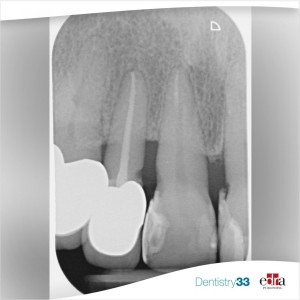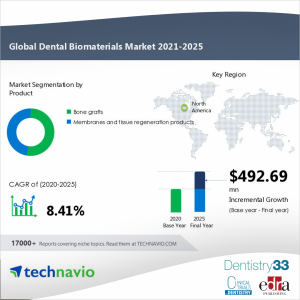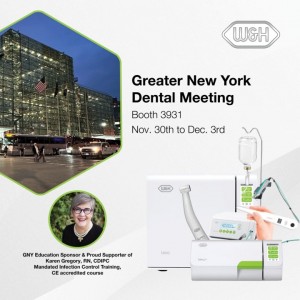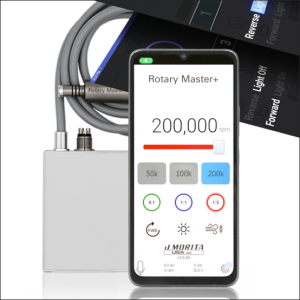
What will be the future of dental biomaterials?
Lara Figini
Since the mid-1770s the history of dentistry has involved the introduction of new high-tech materials and manufacturing processes, materials often borrowed from fields unrelated to dentistry. Related troubleshooting has also emerged from fields unrelated to dentistry.
This is likely to continue, said Prof. J. Robert Kelly, of the Department of Reconstructive Sciences at the University of Connecticut, in an editorial published in the January 2021 Journal of Prosthetic Dentistry.
To ponder the future of biomaterials in dentistry Kelly relies on the words of Confucius: "Study the past if you want to define the future."
It is encouraging to see how closely dentistry has monitored external advances and literature outside its own field, and how many capable scientists we have who know dentistry and related sciences. In this article, the author examines how key materials have been used in dental practices and organizes them into sources in an extended classification, assuming that future materials are likely to derive from one of these sources.
The future of dentistry will develop to include the increased use and benefits of automated systems. You will have better engineering with existing materials through failure analysis from clinical samples. Changes may also come about through iterative improvements in materials and practices, always based on observations of clinical behavior. Examples include the use of scaffolds for hard and soft tissue repair; the development of “intelligent” or smart materials.
The author points out that most, if not all, dental materials are derived from the following sources:
- developed for dentistry (by dentists or non-dentists)
- derived from scientific literature outside of dentistry (ceramics, chemistry, materials science) or
- borrowed from an industry outside of dentistry.
All these developments qualify as high tech. An historical look at the evolution of of dental materials would also include:
- The glass ceramic inlay developed by Charles Henry Land in 1887 is a good example of a material and process invented by a dentist.
- Ceramic as a material for the denture base was developed by Nicholas Dubois de Chemant, a well-known Parisian dentist. In 1792, de Chemant developed a 14-year patent for the exclusive production of his own invention of glued porcelain. In 1804, he claimed to have produced 12,000 porcelain dentures: this is an example of borrowing a technique derived from an industrial sector outside of dentistry, but developed largely by a dentist.
- ECC Stanford, a Scottish chemist, created alginates from British seaweed in the 1880s.
- Zirconia, today a widely used ceramic, involves the confluence of two ceramic processing sciences and computer science.
- Computer-aided design (CAD-CAM) manufacturing, which fine-tuned the manufactured ceramic inlay called CEREC, was invented by the dentist Werner Hans Mörmann and the electrical engineer Marco Brandestini, thus interaction between dental and other sectors.
Automated systems are now part of the dental clinic and laboratory and are likely to become increasingly important in the future when the fabrication of restorations will be possible in the office. Costs will be reduced and quality increased, setting up internal laboratories.
Future dentistry, according to Kelly, will also pay attention to the study and analysis of the failures and breakdowns of many of these artifacts. Despite the use of various types of materials, the dental field does not always take into consideration or have adequate means to identify them, unlike other industries such as electronics and the automotive field, with the aim of modeling them and iteratively improving their durability.
The development of improved laboratory tests (shear-bond tests, wear tests, fracture toughness tests) based on identified clinical failures and mechanisms of damage accumulation are likely to play an important role in the development of future materials, both ceramic and resin.
Lastly, the author underscores that the future of dentistry will be based on the use of smart or reactive materials that have the ability to respond in a controlled way to stimuli such as stress, sudden and continuous changes in temperature, humidity, pH or electric and magnetic fields.
For some potential uses, the main feature of smart materials includes the ability to revert to their original state after stimuli have been removed. An example of these smart materials is nickel-titanium (NiTi) with its various areas of use in orthodontics, implants and endodontics.
Kelly concludes that the cost of the materials he uses is rarely a determining factor for the prospective dentist. After all, if the new material is less expensive than gold, it could very well have a place in the dental office.
For more information: "Future of dental biomaterials: Gazing into Bob’s crystal ball."
 Related articles
Related articles
By Arianna Bianchi
Endodontic therapy is one of the most used techniques in dentistry, allowing the removal of contaminated or damaged pulp tissue and replacing it with a biocompatible synthetic material to prevent...
Restorative dentistry 28 February 2023
Remineralizing effect of contemporary ion-releasing materials in mineral-depleted dentin
By Lorenzo Breschi and Carlo D’Alessandro
Data comparing remineralizing abilities under conditions similar to the clinical ones, are still insufficient and inconsistent.
Market 03 March 2022
The global market for dental biomaterials is projected to grow by a CAGR of 8.41% during the forecast period of 2020 to 2025, according to a report by Technavio, a market analysis company. Across the...
News 24 November 2025
W&H Group, an international leader in advanced dental and medical technology, will showcase its full portfolio of innovative solutions at the Greater New York Dental Meeting from November 30 –...
News 27 October 2025
Young Innovations Strengthens North American Leadership Team
Young Innovations, a leading global manufacturer and distributor of dental supplies and equipment, is pleased to announce two significant additions to its North American leadership team as part of...
 Read more
Read more
Oral pathology 25 November 2025
Virtual microscopy (VM) is a technology for showing microscope slides using computers and could be considered a progression of classic methodology using optical microscopes.
For every assist this season, the insurance provider will donate $25 to TUSDM Cares for Veterans
Products 25 November 2025
J. MORITA USA, a world leader in handpiece technology, has announced the Rotary Master+ Electric Motor. Compatible with Morita TorqTech electric attachments and most competing electric handpieces on...
News 25 November 2025
Let’s be honest: nothing kills the vibe quite like bad breath. However, while 85% of people prefer for someone to tell them if their breath needs some freshening up, only 15% are willing to break...
News 25 November 2025
Vitana Pediatric & Orthodontic Partners (Vitana), a dentist-led dental partnership organization (DPO) focused exclusively on elite pediatric dental and orthodontic practices with operations in...















